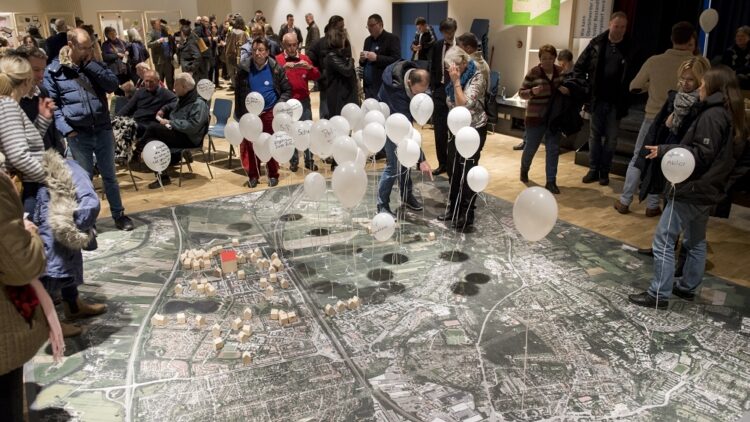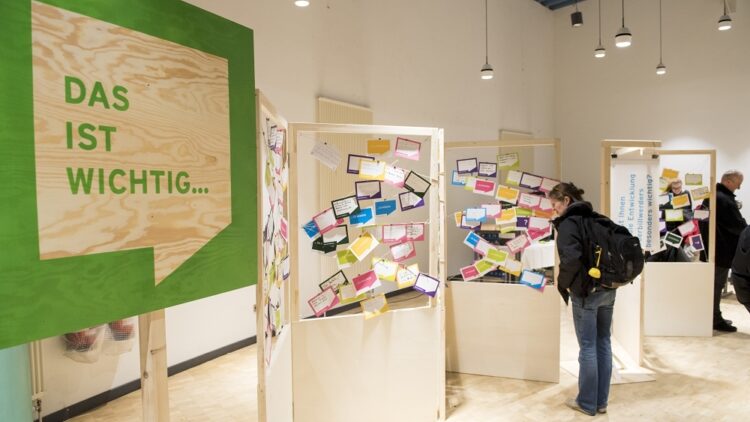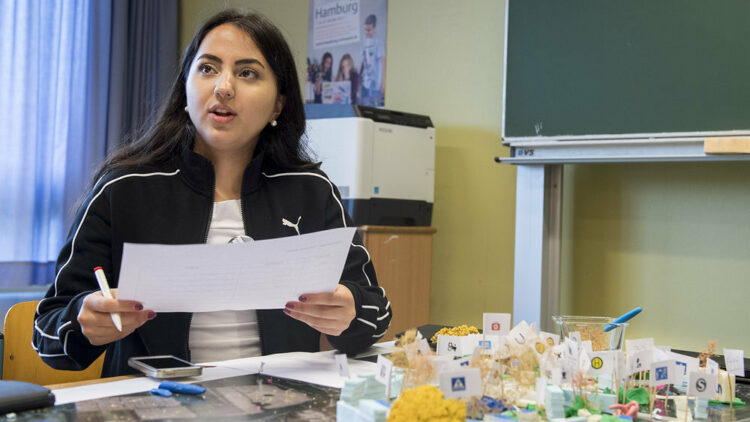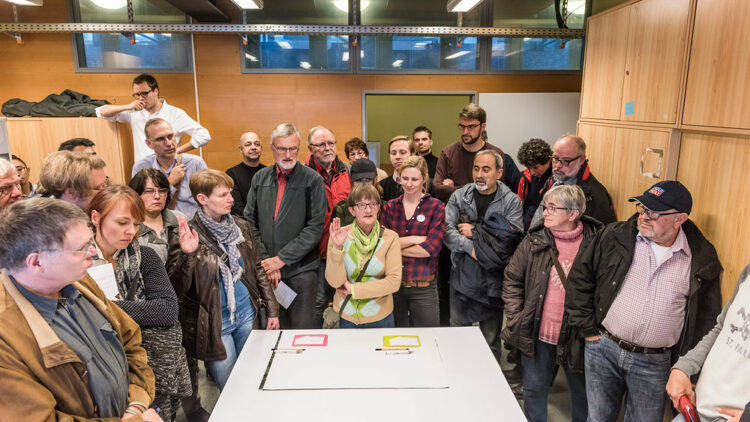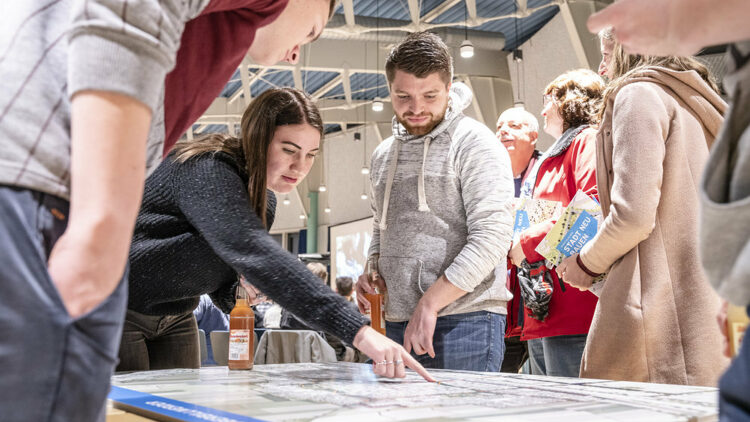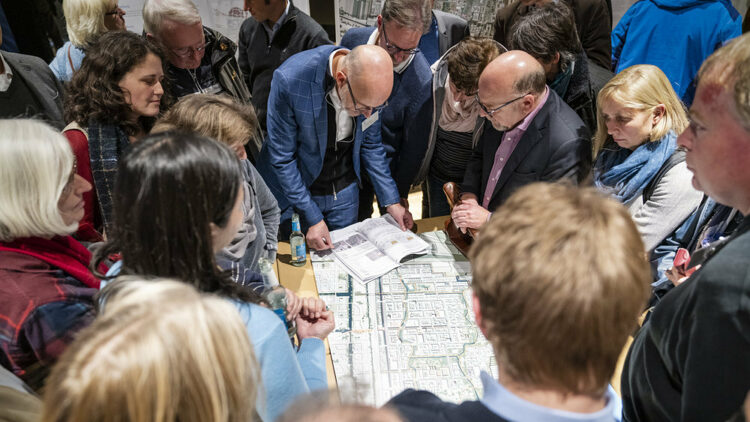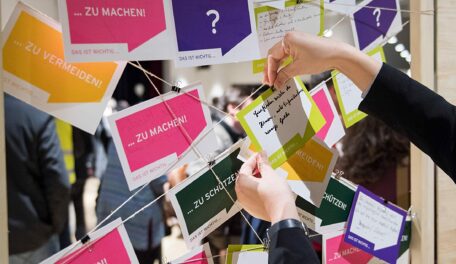Oberbillwerder: Hamburg’s 105th district
Total area:
118 ha
Housing units:
6.000 - 7.000
Leafy and open space:
approx. 28 ha
Jobs:
up to 5.000
At around 118 hectares, Oberbillwerder is not just Hamburg’s second-largest urban development project, it will also become the Hanseatic city’s 105th district. North of the suburban railway station Allermöhe (map), in the Bergedorf borough district, up to 7,000 housing units of varying typologies and up to 5,000 jobs will be created from the mid-2020s. Here, a lively district will develop, realising innovative mobility concepts and modern, energy-efficient modes of life and work. The master plan for Oberbillwerder follows the fundamental concept of a district integrated in its surroundings, with lively neighbourhoods and diverse offers of education, culture, leisure, sport and recreation.
The basic urban structure is derived from the local cultivated landscape. The open space with the Grüne Loop (Green Loop) will become the core element linking five different quarters. These each present their own character and are organised around several small-scale squares. In this way, compact local neighbourhoods will arise. Hamburg’s 105thdistrict will also be developed as an “Active City” model district, with a focus on sport, health and activity.
Oberbillwerder – the Masterplan
On 26 February 2019, the Hamburg Senate approved the Oberbillwerder master plan. Its basis was the winning design by the Dutch-Danish planning team ADEPT with Karres + Brands, resulting from the competitive dialogue.
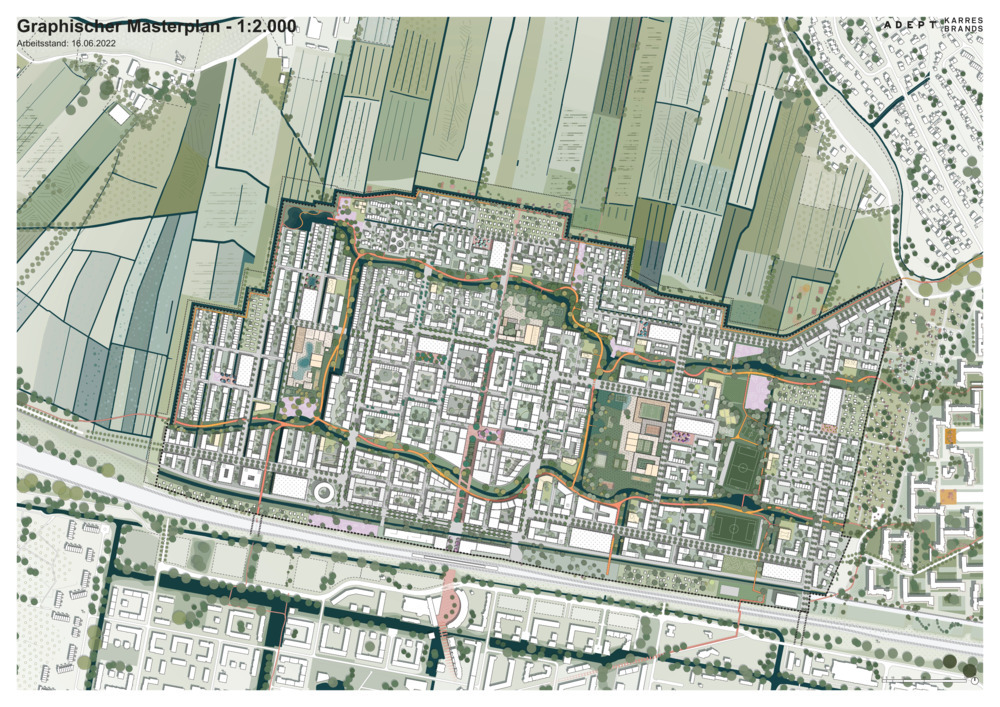
Oberbillwerder is in the borough district of Bergedorf, a quarter of an hour by suburban railway from central Hamburg and only two suburban railway stations from the centre of Bergedorf. Developed from the location, the master plan is based on the principle of a district integrated in its environment. It creates various connections with neighbouring districts and at the same time keeps a respectful distance from the village of Billwerder. In the concept of the “Connected City”, open space is the linking element. At its core is the Grüne Loop (Green Loop), which sets the basic structure of Oberbillwerder and at the same time becomes its trademark.
Oberbillwerder consists of five quarters, notably differing in character. Diverse typologies, systems of ownership, open spaces and usages allow nearly all requirements to be met: the townhouse by the water, the apartment in the urban centre and the leafy, detached family home are all examples of this varied range. Such diversity allows the Hamburg housing policy of the “three-way split” (1/3 subsidised residential construction, 1/3 privately financed construction of rental housing units, 1/3 owner-occupied flats) to be implemented in the various locations.
Local life in Oberbillwerder will unfold on the many squares spread across the entire district: social, religious and cultural institutions and offerings find their home here. The ground floors open onto the street with small retail shops and restaurants.
In Oberbillwerder, open space is the linking element – with the Grüne Loop (Green Loop) forming the heart of the new district. Here, synergies will arise from multiple uses, helping to keep space usage minimal: in the Grüne Loop, there are public open spaces for relaxation, sport and play, as well as pedestrian and cycle paths. The Grüne Loop is also an important element for rain retention in the district.
Oberbillwerder will be a model district for the Active City. Sport and activity are understood as an integral component of daily life. Various widely accessible offerings for all sections of the population will support an active and communal way of life in the new district. These include not only the large new activity park but also the fact that daily routes can easily be traversed on foot or by bicycle.
Hamburg’s 105th district is not to be totally car-free, but should be as free as possible from parked cars in public space. The goal is to make the car as superfluous as possible in the district through alternative and newer forms of mobility, ones that are more environmentally friendly, comfortable, fast and cost-effective. There are direct bus and suburban rail connections ensuring a good connection to Bergedorf and the centre of Hamburg. Parking spaces for residents and guests are concentrated in the 11 mobility hubs. It is possible to park your own car here and change to other modes of transport (bicycle, e-bike, public transport or, in future, small autonomous shuttle buses). In this way, residential streets and outdoor playgrounds can be kept as free from traffic as possible, becoming lively public spaces. The mobility hubs, however, are much more than parking spaces: here there are small shops alongside cultural and social facilities for the neighbourhood. Together with the quarter squares, they will become small local centres and places of encounter.
The connection to the higher-level road network is via three connections to the west, north-east and south-east, distributing traffic in the best possible way.
1. Collecting and informing
The first two phases had the goal of collecting wishes, local knowledge and concerns from citizens and stakeholders before the start of the actual process, and to develop initial ideas together with experts.
2. Developing ideas
Alongside a large opening event, online participation and a 2-day ideas workshop, surveys were carried out on the ground in the district.
3. Making plans
In autumn 2017, the competitive dialogue entered its third phase: making plans. This process allowed the continuation of the open and transparent planning process already begun at the end of 2016 and invited citizens to participate. In total, around 3,000 people took part in the planning process for Oberbillwerder over 10 events.
The competitive dialogue was carried out in accordance with German procurement regulations (VgV) in two phases: 1stphase (qualification) and 2nd phase (consolidation). The two-phase process began in autumn 2017 and ended in May 2018. Of the 34 planning teams who applied as part of the EU-wide competition, 12 fulfilled all the requisite criteria and were invited to take part in the first phase of the dialogue. There followed two public presentation and discussion events and two public planning workshops. In various formats, citizens had the opportunity to express their ideas about the designs and formulate desires and wishes.
4. Shaping the future
On 24 May 2018, an advisory panel of high-ranking representatives of politics and citizens, as well as high-profile experts, chose the design
“The Connected City” from the planning team ADEPT with Karres + Brands and Transsolar Energietechnik GmbH.
In phase four, the present master plan was then developed from the selected design.
All phases are documented and can be downloaded. (only German)

In April 2019, the German Society for Sustainable Construction (DGNB) pre-certified the Oberbillwerder master plan with its highest, platinum, award.
Participation and the competitive dialogue process
The IBA Hamburg took it as its task to make the planning process for Oberbillwerder transparent and to encourage participation. In more than 10 events and further formats, citizens were invited to play an active part.
What happens next?
On 26 February 2019, the Senate of the Free and Hanseatic City of Hamburg approved the master plan for Hamburg's 105th district. Since then, the individual topics covered by the Oberbillwerder master plan have been further specified. On 25 April 2019, the Bergedorf district assembly approved the initiation of the development plan procedure. The planning horizon for the realisation of the liveable, vibrant, affordable and sustainable district of Oberbillwerder is well over a decade. One of the most important factors in the planning of these ambitious goals is the early establishment of continuous and holistic control of the development process. To this end, the Hamburg Senate set up a new development company at the start of 2018, the IBA Projektentwicklungsgesellschaft mbH & Co. KG (IPEG) and thus paved the way for the realisation of the second-largest urban development project. Initial development work is expected to begin in the mid-2020s. Building construction will then start approximately two to three years later. At the same time, IBA Hamburg will continue its process-accompanying communication and participation activities.
